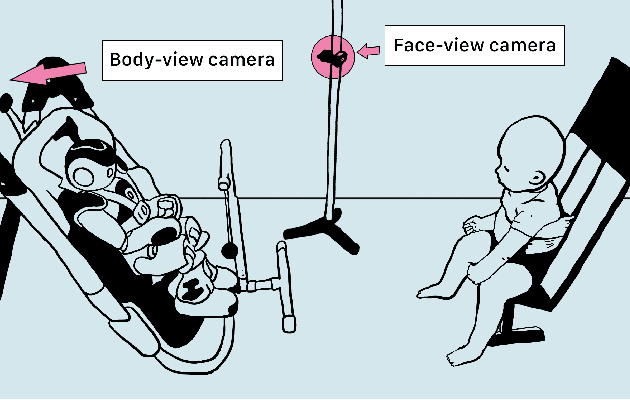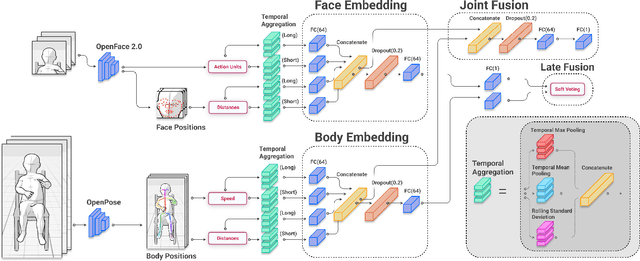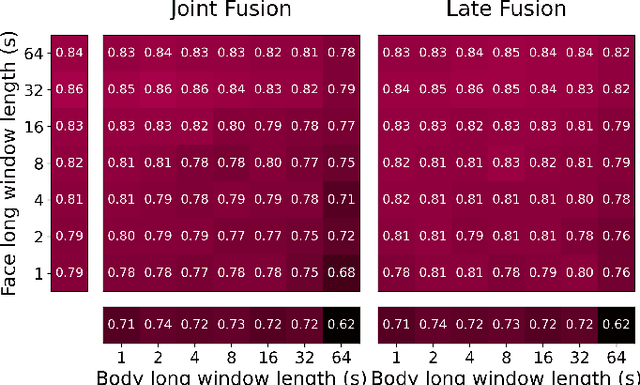Weiyang Deng
Evaluating Temporal Patterns in Applied Infant Affect Recognition
Sep 07, 2022



Abstract:Agents must monitor their partners' affective states continuously in order to understand and engage in social interactions. However, methods for evaluating affect recognition do not account for changes in classification performance that may occur during occlusions or transitions between affective states. This paper addresses temporal patterns in affect classification performance in the context of an infant-robot interaction, where infants' affective states contribute to their ability to participate in a therapeutic leg movement activity. To support robustness to facial occlusions in video recordings, we trained infant affect recognition classifiers using both facial and body features. Next, we conducted an in-depth analysis of our best-performing models to evaluate how performance changed over time as the models encountered missing data and changing infant affect. During time windows when features were extracted with high confidence, a unimodal model trained on facial features achieved the same optimal performance as multimodal models trained on both facial and body features. However, multimodal models outperformed unimodal models when evaluated on the entire dataset. Additionally, model performance was weakest when predicting an affective state transition and improved after multiple predictions of the same affective state. These findings emphasize the benefits of incorporating body features in continuous affect recognition for infants. Our work highlights the importance of evaluating variability in model performance both over time and in the presence of missing data when applying affect recognition to social interactions.
 Add to Chrome
Add to Chrome Add to Firefox
Add to Firefox Add to Edge
Add to Edge